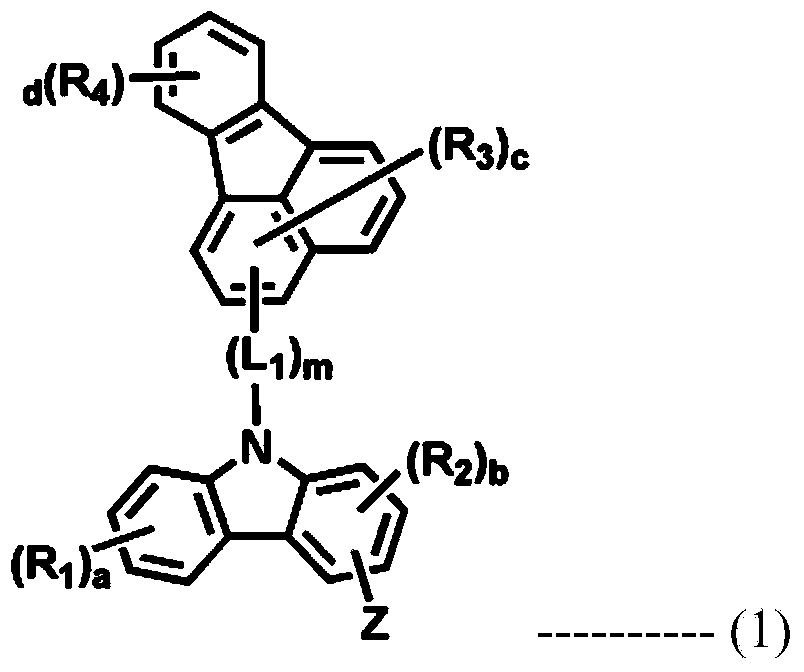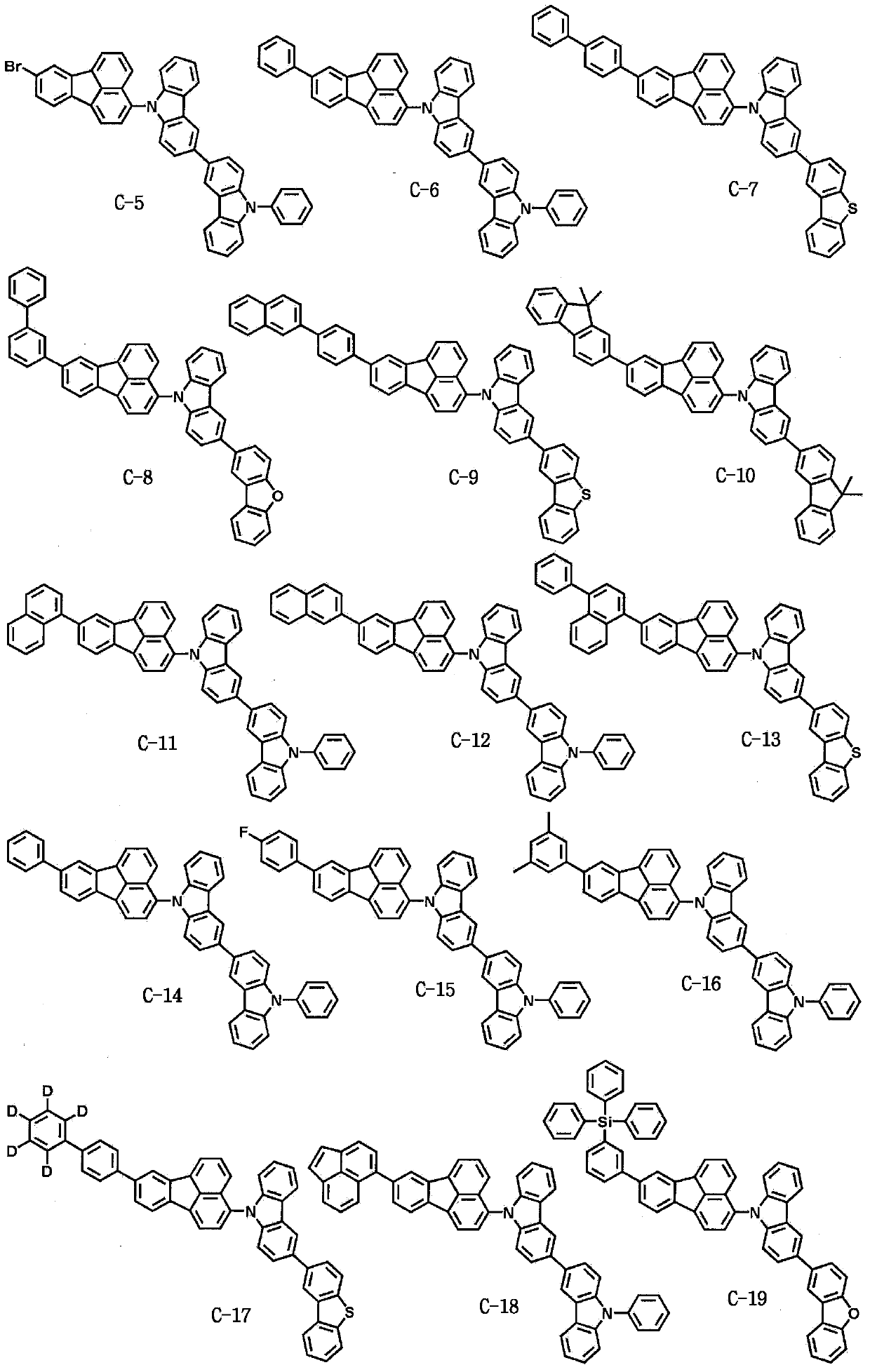Novel organic electroluminescent compounds and organic electroluminescent device using the same
A compound and luminescent technology, which is applied in the direction of electroluminescent light source, organic chemistry, electric solid-state devices, etc., can solve the problems of phosphorescent electroluminescent devices that do not publicly emit red light, and achieve improved current characteristics, increased power efficiency, The effect of good layering
- Summary
- Abstract
- Description
- Claims
- Application Information
AI Technical Summary
Problems solved by technology
Method used
Image
Examples
Embodiment 1
[0070] Embodiment 1: the preparation of compound C-35
[0071]
[0072] Preparation of compound 1-2
[0073] After compound 1-1 (50 g, 247.2 mmol) was dissolved in MeCN (50 mL) and N-bromosuccinimide (NBS) (44 g, 247.2 mmol) was added, the reaction mixture was stirred at room temperature for 1 day. After the reaction was terminated, the reaction mixture was extracted with ethyl acetate (EA), and the organic layer was concentrated and purified through a silica column to obtain compound 1-2 (55.6 g, 80%).
[0074] Preparation of Compound 1-3
[0075] After compound 1-2 (7.7 g, 27.5 mmol) was dissolved in tetrahydrofuran (THF) (250 mL), the reaction mixture was cooled to -78°C. 2.5M n-BuLi in hexane (17.6 mL, 44 mmol) was added to the reaction mixture, and the reaction mixture was stirred for 1 hour. At the same temperature, slowly add B(Oi-Pr) 3 (12.6 mL, 55 mmol), then the mixture was stirred for 2 hours. After stirring, the reaction mixture was quenched by adding ...
Embodiment 2
[0083] Embodiment 2: the preparation of compound C-56
[0084]
[0085] Preparation of compound 2-1
[0086] Compound 1-3 (10g, 40.6mol), 4,4'-dibromobiphenyl (38g, 121.9mol), Pd(PPh 3 ) 4 (2.3g, 2.03mmol) and Na 2 CO 3 (12.9g, 121.9mol) was added to toluene (244mL) and purified water (60mL), and the reaction mixture was stirred at 75°C for 3 hours. After the reaction was terminated, the aqueous layer was removed, and the organic layer was concentrated and purified through a silica column to obtain compound 2-1 (9.5 g, 54%).
[0087] Preparation of Compound C-42
[0088] Compound 2-1 (5.0g, 11.5mmol), compound 1-7 (4.7g, 11.5mmol), Pd(OAc) 2 (129mg, 0.575mmol), 50%P(t-Bu) 3 (0.54mL, 2.3mmol) and Cs 2 CO 3 (11.2 g, 34.5 mmol) was added to toluene (50 mL), and the reaction mixture was stirred at reflux for 1 day. The reaction mixture was extracted with EA, and the reaction mixture was distilled under reduced pressure, and then filtered through a column (MC and...
PUM
| Property | Measurement | Unit |
|---|---|---|
| thickness | aaaaa | aaaaa |
| thickness | aaaaa | aaaaa |
| thickness | aaaaa | aaaaa |
Abstract
Description
Claims
Application Information
 Login to View More
Login to View More - R&D
- Intellectual Property
- Life Sciences
- Materials
- Tech Scout
- Unparalleled Data Quality
- Higher Quality Content
- 60% Fewer Hallucinations
Browse by: Latest US Patents, China's latest patents, Technical Efficacy Thesaurus, Application Domain, Technology Topic, Popular Technical Reports.
© 2025 PatSnap. All rights reserved.Legal|Privacy policy|Modern Slavery Act Transparency Statement|Sitemap|About US| Contact US: help@patsnap.com



